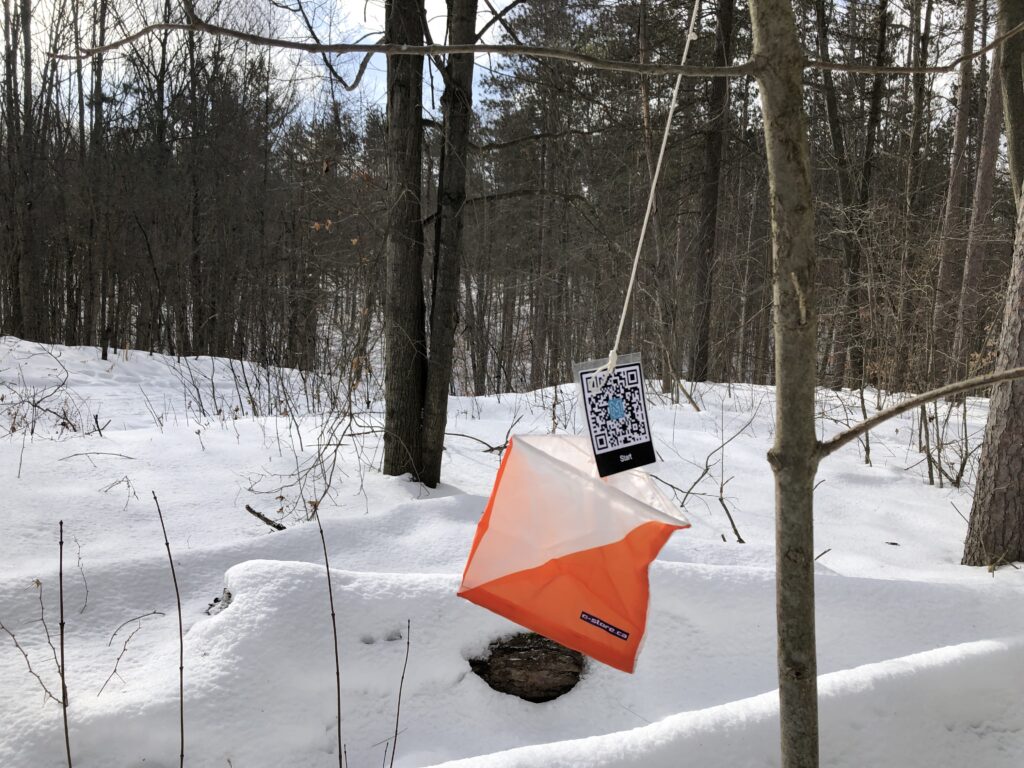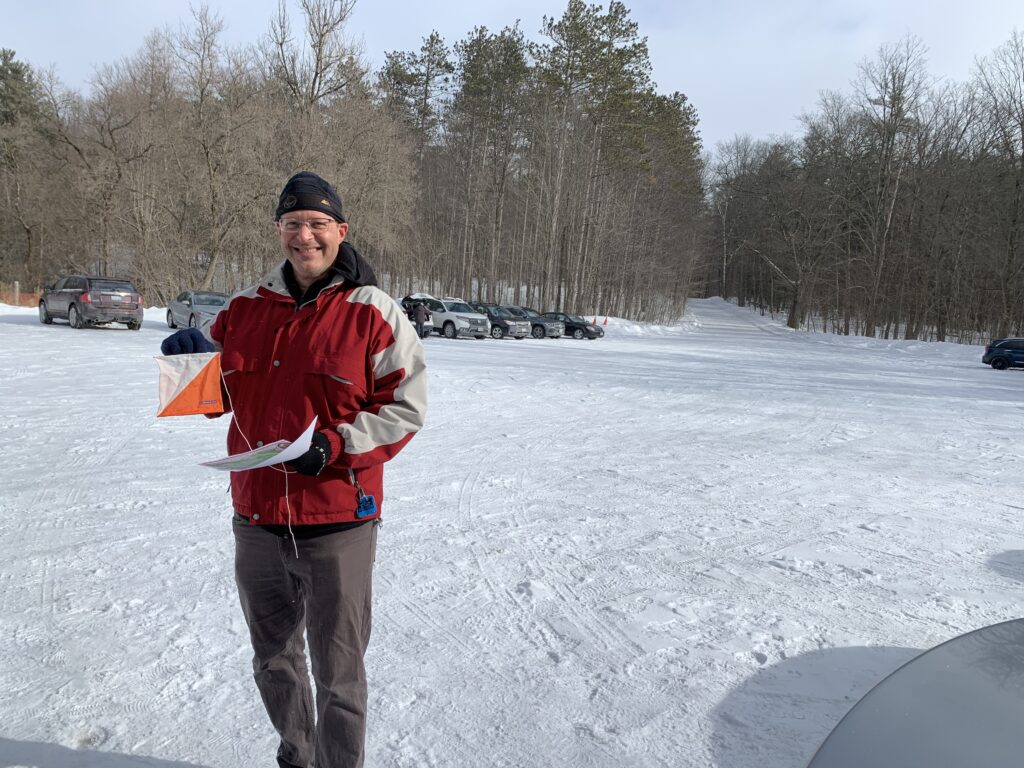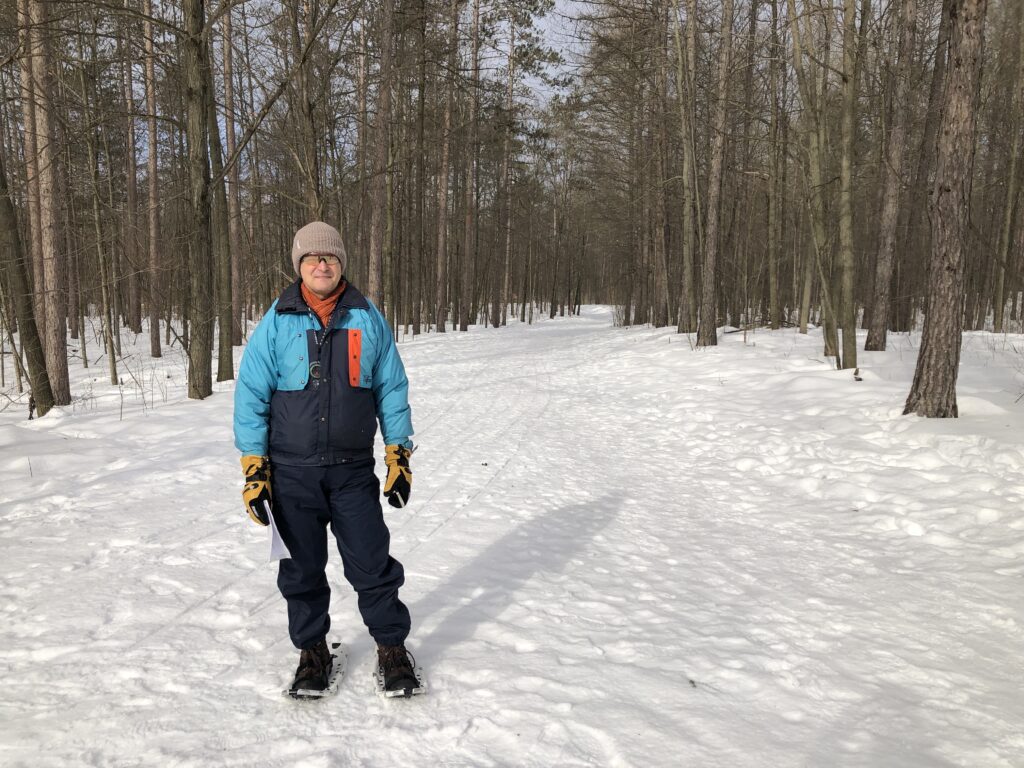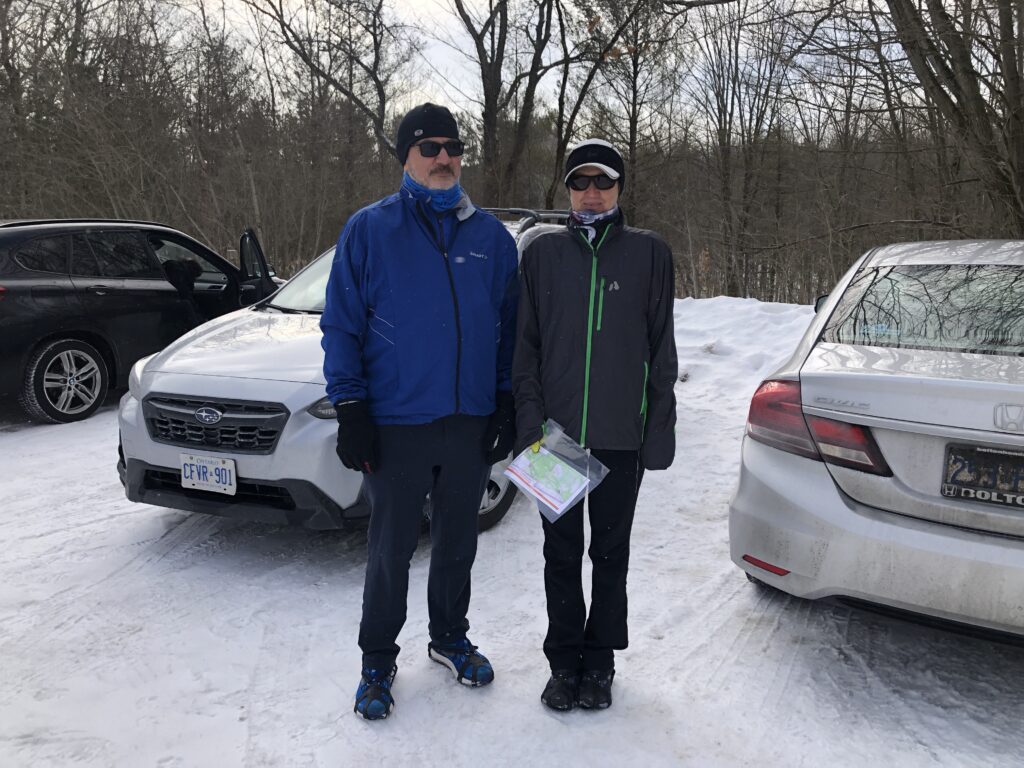By Mariana Schuetze
At 11 a.m on a winter morning in Eldred King Woodlands Park, you can barely hear the sounds of people stepping on the soft snow. In the -9C degree weather, a group of people decide to challenge themselves in the cold— many for the first time— and go out into the forest to navigate.
Eugene Mlynczyk, one of the Feb. 12, 2022 orienteering race organizers, is giving out instructions to a few first-time orienteers in the parking lot. Mlynczyk gives a loud speech about orienteering to the five people listening and teaches them how to properly use the compass to orienteer a map. “Orienteering is like magic,” he said, “once you get the map orienteered, you just keep going.”
Orienteering requires athletes to use a map and a compass to navigate, in order to get to as many set locations. Clubs in the Greater Toronto and Hamilton area have been putting together races and training courses for over 55 years. But with the pandemic, they’ve had to adapt.
As Ontario was faced with a lockdown, large gatherings were no longer feasible, so Toronto Orienteering and Dontgetlost Adventure Running, two orienteering clubs from the GTA and Hamilton area, ditched the social aspect of the sport by creating “virtual” races. Participants run races by themselves and on their own time with the help of an app. Andrew Bell and Emil Gadjanski, both members of orienteering clubs in the area, said they believe the virtual races have facilitated beginners’ involvement in the sport since the app and the longer availability of races make them more accessible to new participants.
To the surprise of experienced orienteers—now reflecting back on worse times— the pandemic, rather than hurting the sport, forced it to adapt and helped it grow.
Before the restrictions, orienteering races put on by these two clubs would usually begin with a mass-start and end with the participants getting together to discuss their strategies. Alternatively, pre-pandemic races could also have timed starts, which meant having set times for each person to start running their path, so they don’t run into each other as they are doing the challenge.
For the last two years, both Toronto Orienteering and Dontgetlost have been using the MapRun6 app to run their virtual races. With the app, participants get a map of the race. and as they run the course and get to the specific locations they need to reach, the checkpoints, the app buzzes and logs in their times.


At the end of a race, participants can use the MapRun6 app to see everyone’s routes and compare techniques. “This is a lot of the strategy behind orienteering,” said Bell, a member of Toronto Orienteering. Bell has been with Toronto Orienteering since 2006, first as a member and participant of races, and for the last five years, as a board member as well.
After a race, when runners have logged in their course and times into the MapRun6 app, the app will show everyone’s course like this. June 13, 2022. (Facebook via Dontgetlost Adventure Running)
On February 12 and 13, 2022, Toronto Orienteering put on one of its virtual races, the UKR O-Cup race.
For this race, Toronto Orienteering saw 39 participants for the two days, said Bell. Fifteen of those were people adventuring into orienteering for the first time.
Having more people involved in the sport in the last two years is possibly another silver lining of the changes made during the pandemic, especially since the app makes the races more accessible to newcomers.
Gadjanski explains the app is great for beginners, “because then you can actually see where you are, and it helps you to learn how to use a map.”
Bell has said his club plans on still using the app to put on some races even after the pandemic restrictions are lifted.
On the other hand, using the mapping application also has its downsides, especially for people not used to the technology. Ilona Dobos, a 76-year-old orienteer, says she doesn’t have an “expensive cell phone” with data, so she can’t use the app as she runs the course. “So we don’t do that, but it’s still fun,” she adds.
Dobos first came across orienteering back in 2000 when looking for activities in the forest. Since then, she says, she has gotten better at the sport and was even winning races in her age group in Ontario before the pandemic.
Apart from missing out on the competition part of the sport by not really using the app, Dobos also misses interacting with other club members. She says catching up with friends after an event, usually over a warm drink, used to be a nice part of going orienteering. But due to the restrictions and the virtual races, this is not being done. “So it’s just: go there, say hello to a few people through your mask, and then go and do the course, unwind and come home,” she said.
Gadjanski is another orienteering athlete that misses the social part of orienteering. He says he and his wife are super involved with the sport. They both sit on the board of Orienteering Canada,
Gadjanski is a member of Dontgetlost Adventure Running, a Hamilton-based orienteering club that has roots in one of North America’s oldest clubs, the Hamilton Orienteering Association, founded in 1966. As a member of Dontgetlost, Gadjanski says that the club “barely missed a stride” in adapting to the pandemic restrictions back in March 2020.
Jay Thompson, orienteer and Program Manager for Dontgetlost, says the club has been using the MapRun6 app to run virtual races for the last two years of the pandemic. Thompson said their transition to using the app was necessary due to the pandemic restrictions.
The virtual races have allowed the club to “make it through (the pandemic) fairly unscathed,” Thompson said. However, some parts of the sport are still missing since orienteering is very “community-based.”
This was the map for the Feb. 12 and 13, 2022 O-Cup race by Toronto Orienteering. Explore the map to learn how orienteering maps work. Map by Toronto Orienteering. (Mariana Schuetze/T·)
Soon, and as the COVID-19 restrictions are being taken away, Thompson says the club hopes to get back to doing larger in-person events, which they haven’t been able to do for a while now.
“We’re hoping now we can kind of take races that we had, that were successful, and make them even more successful. Make them bigger and better,” Thompson says.



